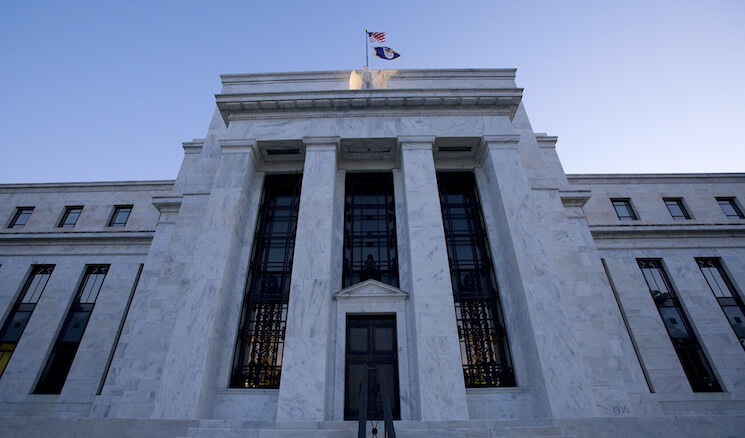Determining the natural rate of interest

Knut Wicksell is not a name you’d expect to pop up in a Wall Street Journal article, even if it’s about a Federal Reserve meeting. But the name of the late 19th and early 20th century Swedish economist appears in a recent article by Harriet Torry published after the U.S. central bank declined to move short-term interest rates up from its current target. He’s there for good reason. The Fed is currently grappling with a concept that Wicksell pioneered: the natural rate of interest.
The natural rate is the rate of interest that’s “consistent with the economy operating at its full potential, expanding without overheating,” as Torry puts it. And it’s also the rate of interest that balances desired savings with desired investment. As you might expect from institutions that try to affect interest rates, the Fed and other central banks have a strong interest in figuring out the natural rate.
The most immediate concern for the Federal Reserve, however, is determining the short-term federal funds rate of interest. One way to think about the natural rate is that it is the short-term rate the Fed sets that is consistent with full employment and stable inflation. This is the level where the Fed can stop hiking interest rates. The lower the natural rate, the fewer hikes the Federal Reserve will have to make during its tightening cycle.
Estimates of this short-term rate can be found by looking at the “Longer Term” dots on the Fed’s quarterly dot plot. These estimates have declined over time and, as Federal Reserve chair Janet Yellen said during her press conference last week, the forecast and path for these rates is quite uncertain.
But how do these short-term rates relate to more longer-term interest rates? The Federal Reserve has far less control over interest rates 10 years out and further. But long-term rates are vitally important for policymakers because they determine the rates at which the federal government borrows money and partially determine how much debt servicing the government can afford. Since 1980, the global long-term natural rate has fallen by about 4.5 percentage points.
Economists Lukasz Rachel and Thomas D. Smith of the Bank of England took a look at what has caused this decline—with an eye to seeing how the natural rate might move in the future. According to their analysis, weaker economic growth has contributed to lower rates, but only by 1 percentage point of the total 4.5 points. Another three points of the decline can be attributed to shifts in demand for savings and investment. (The co-authors say they cannot identify the cause of final 0.5 percentage point change.)
On the savings side of those 3 percentage points, there are three important driving trends. A full percentage point of the decline is attributed to demographic trends of an aging society increasing desired savings, a half point coming from increased inequality, and only a quarter of a point is due to the “global savings glut,” the last of which is often cited by many economists as a major culprit for low long-term interest rates. On the investment side, the co-authors say three smaller factors are responsible for the decline of the long-term natural rate: the gap between the risk-free rate and the return on capital (0.7 points); a decline in the price of capital goods (0.5 points); and less public-sector investment (0.2 points).
Looking at these underlying factors, Rachel and Smith don’t expect a major increase in the long-term natural rate of interest anytime soon. Inequality doesn’t seem ready to decline quickly and they do not see more retirees boosting the savings rate significantly. If they are right then it means lower rates will make financing fiscal stimulus programs much easier, though it also will pose problems for conventional monetary policy. Fiscal and monetary policymakers should prepare for dealing with this reality for quite some time to come.
